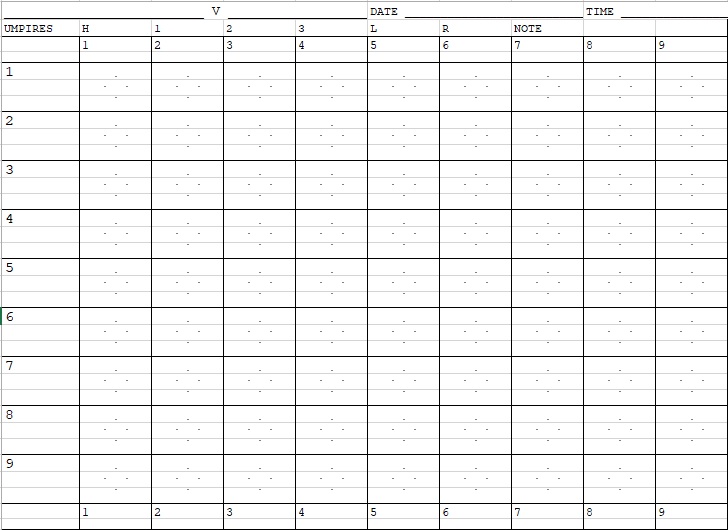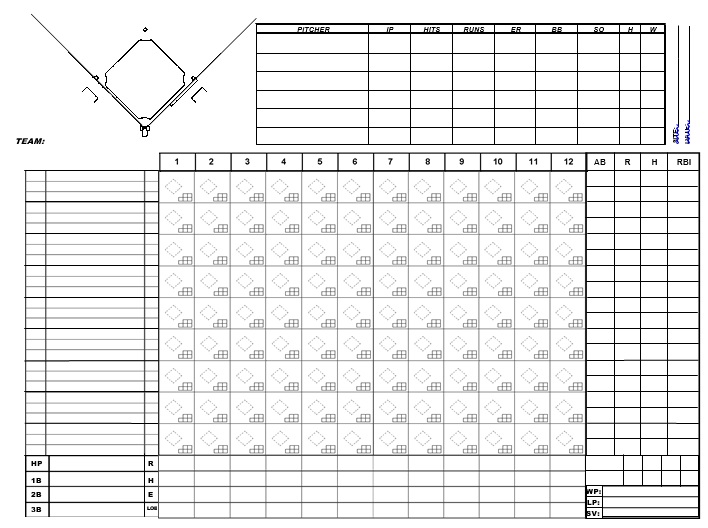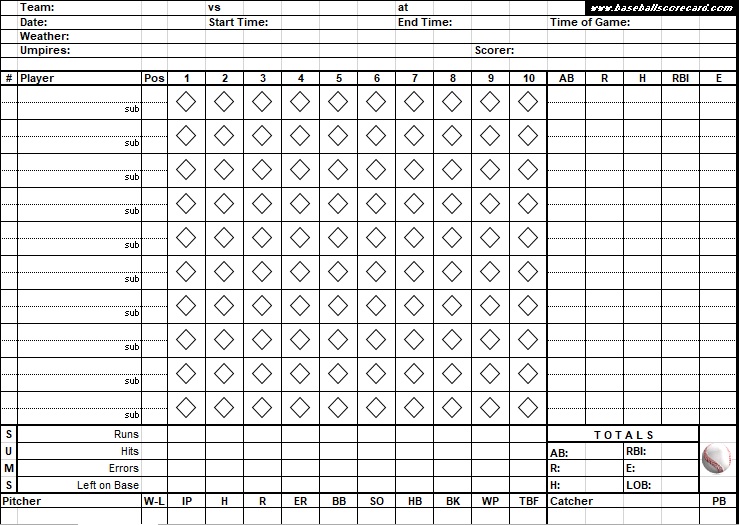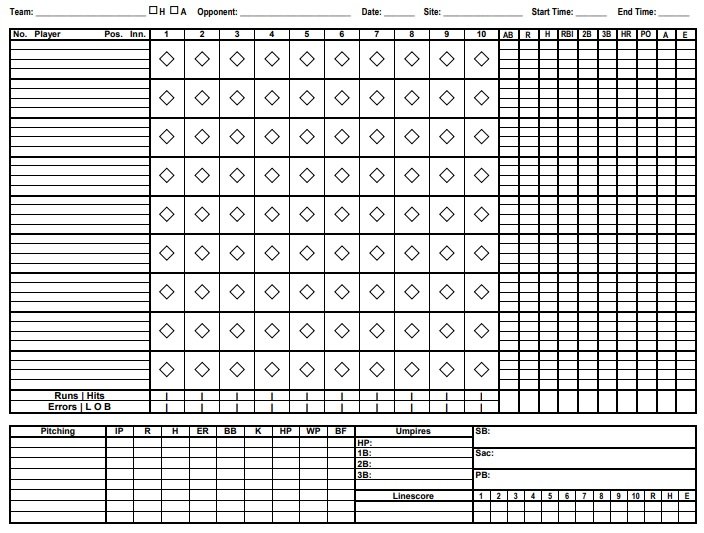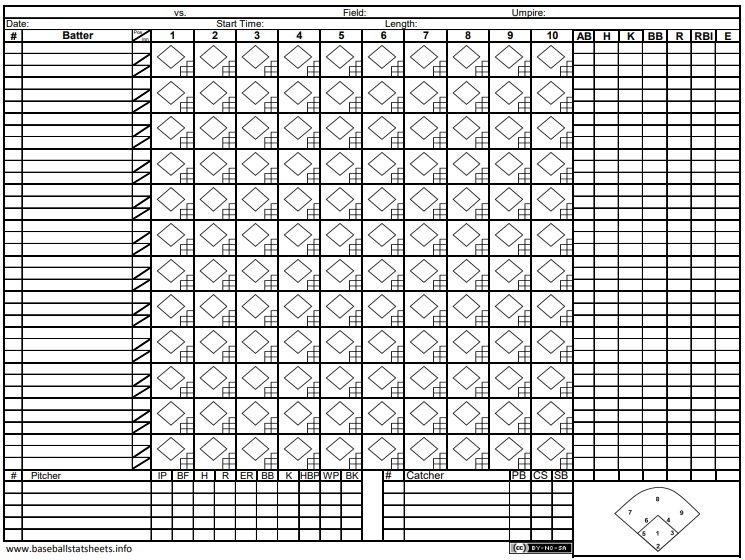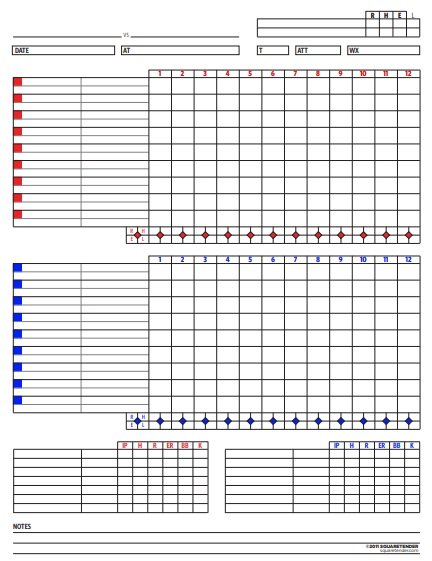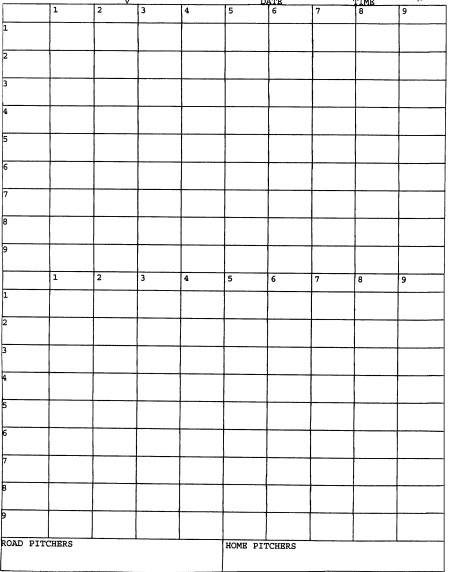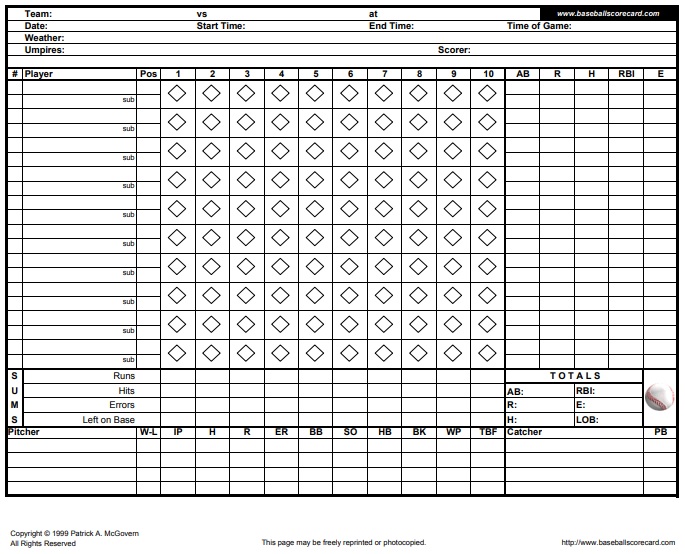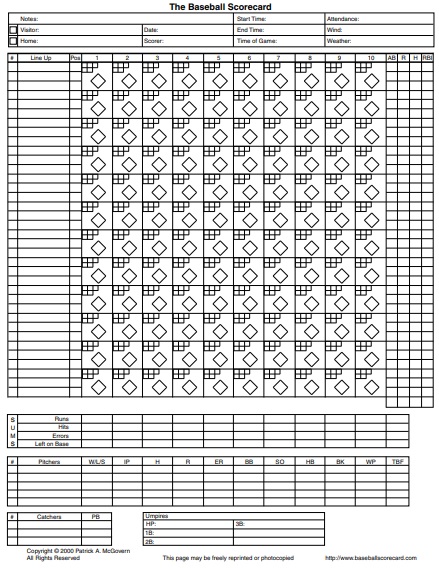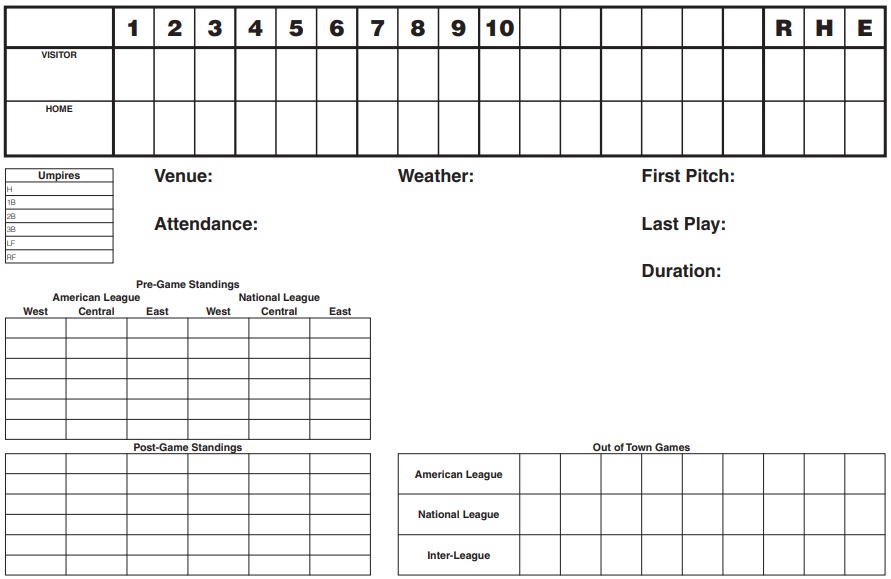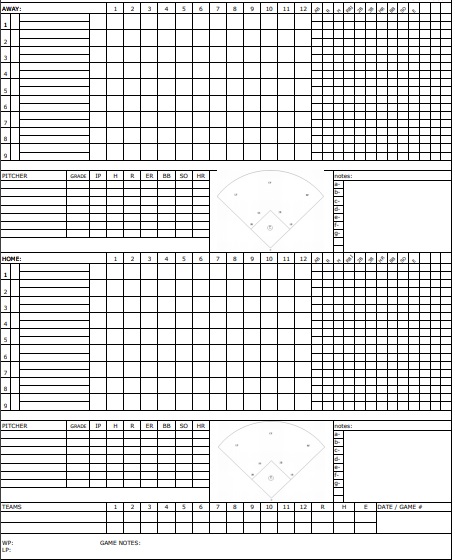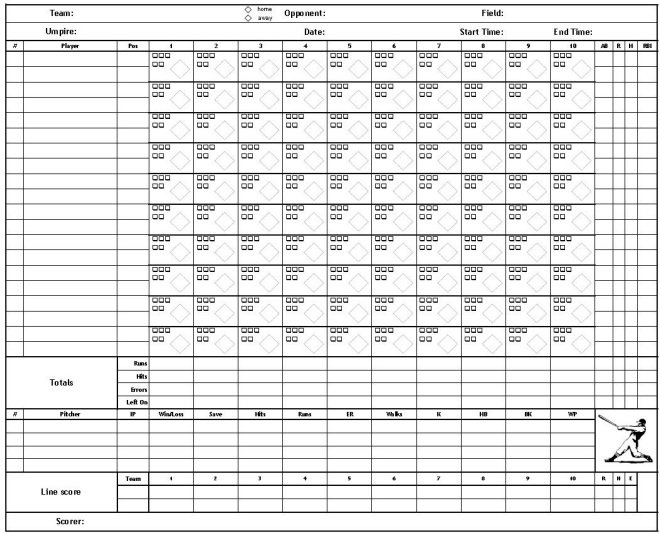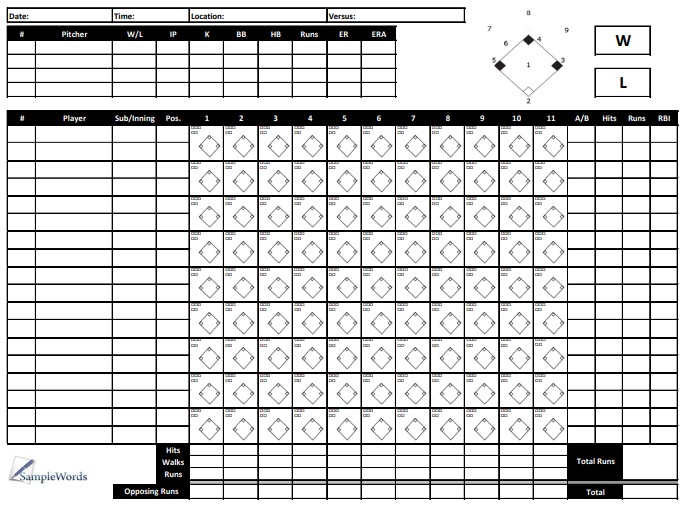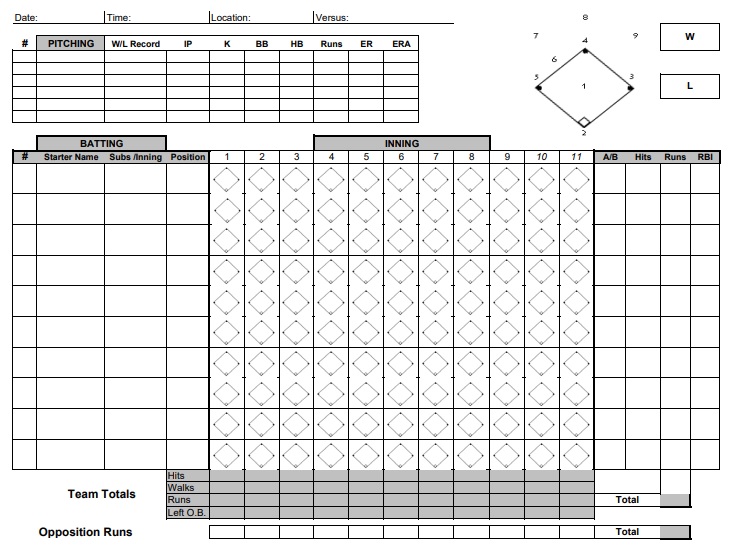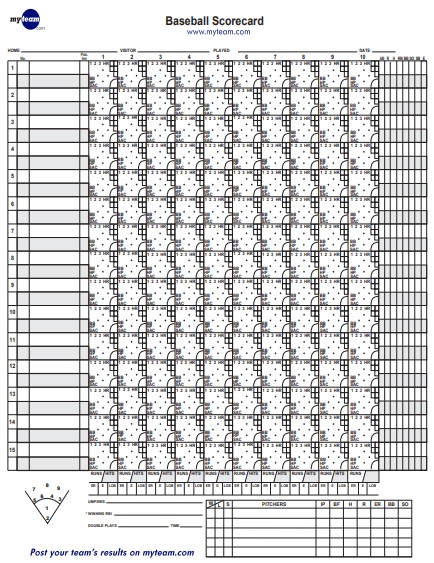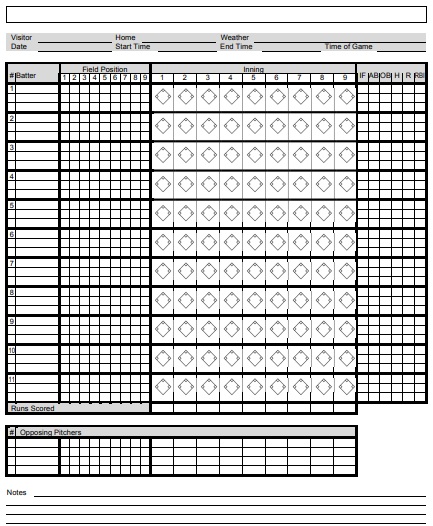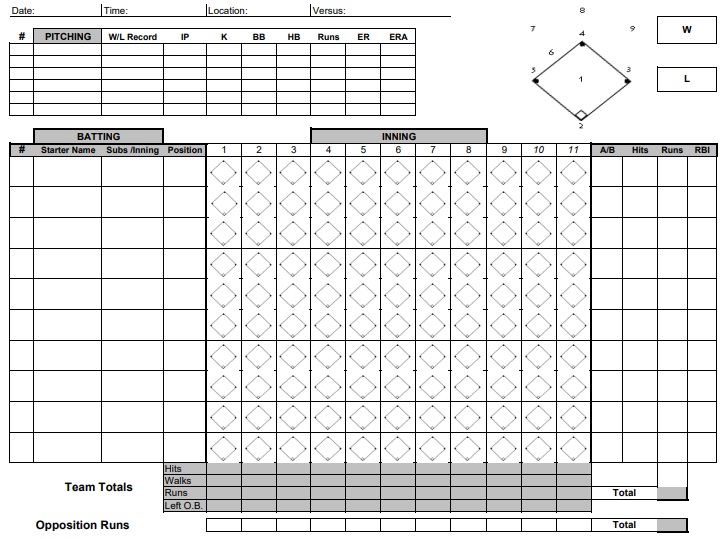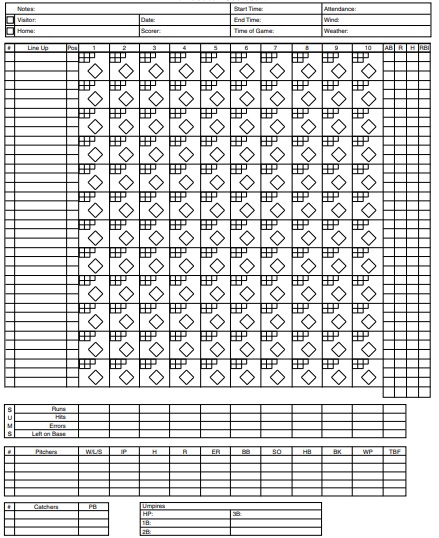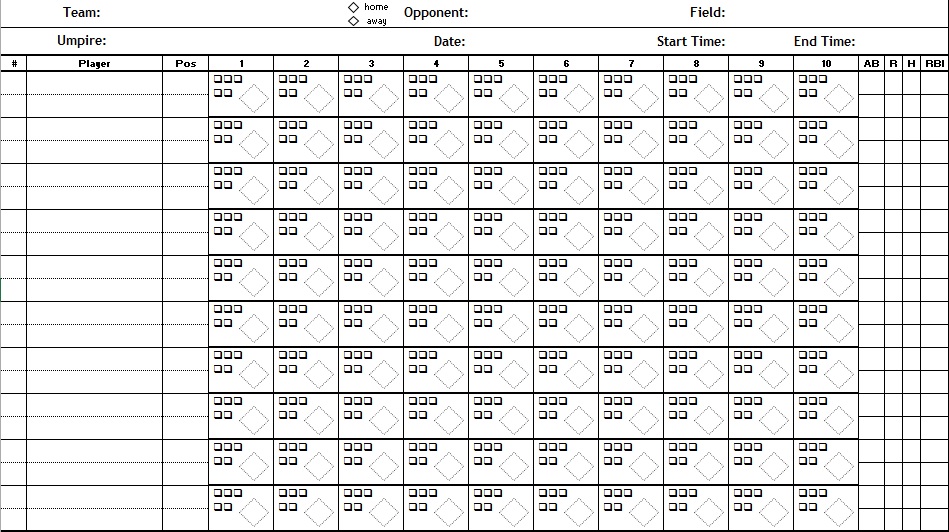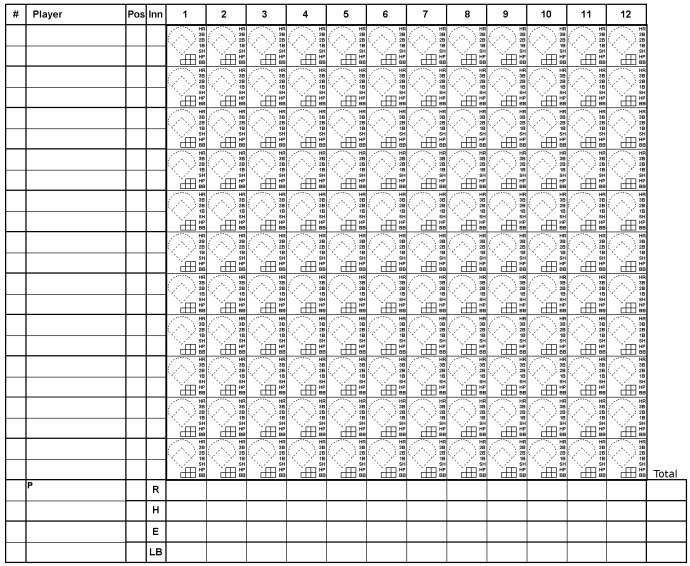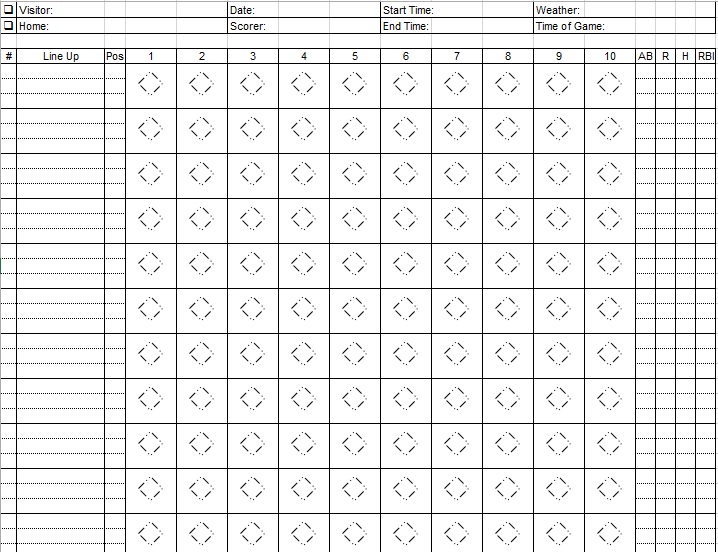A baseball score sheet is a cheap and easy way to keep the official score for a baseball game or to keep track of the score at a game you are watching. This sheet gives you adequate space to keep a record of every play and substitution in most games. For one team per page, it allows you to keep track of hitting, fielding and pitching.
Table of Contents
The batting page:
There are three groups of columns for the batters;
- The lineup,
- The game log
- The totals
The lineup is the first section which you fill out. It is essential to focus on to the squares of the game log because you need one lineup for each row of squares. For each row of squares, most sheets have multiple lines to substitute pinch hitters or pinch runners. You have to fill in the batting line up, uniform number, and fielding position before the start of the game.
In the baseball score sheet, the middle column has at least nine columns. One column is for each inning of a standard baseball game. After the team at bat records, for the last hitter, you have to put a mark on the lower right corner of the box. Then, for the next batter, shift to the next inning. For the game log, you will need the following abbreviations and shorthand;
- 2B/two lines below home plate – double
- 3B/three lines below home plate – triple
- HR/a circle around the diamond – home run
- BB – base on balls (walk)
- E(number) – Reached by error (position)
- F(number) – flied out to (position)
- FC – fielder’s choice
- FO(number) – fouled out to (position)
- IF – infield fly called
- HBP – hit by pitch
- K – strikeout
- Reversed K – struck out looking
- StB – stolen base
- CS – caught stealing
- SB – sacrifice bunt
- SF – sacrifice fly
For fielding positions, you will need to use the following numbering system;
- Pitcher
- Catcher
- First Base
- Second Base
- Third Base
- Short Stop
- Left Field
- Center Field
- Right Field
Pitch tracking page:
For the pitch tracking sheet, you have to notice the following things;
- A section for a lineup
- A section for pitch tracking
- On the right for totals, a third set of column
In the middle section, there are several columns of boxes. Each box has three rows one of balls, strikes, and the result of the at bat. You have a little more room to fill out the pitching results. However, you also have to use the following shorthand and abbreviations so that you can write down information quickly;
- BB – base on balls (walk)
- CS – caught stealing
- E(number) – error (by position)
- ER – earned run
- H – hit (also, for each level of base hit , you can use 1B, 2B, 3B or HR)
- HP/HBP – hit by pitch
- K – strike out
- PK – pick off
- SAC – sacrifice bunt or hit
The fielding page:
The fielding page of the baseball score sheet is not as necessary as the hitting and pitching pages. But it can be helpful when tabulating post-game statistics. This page has four columns, one for player names, and a column each for put outs, assists and errors. The notation for this section is fairly self-explanatory because it just requires tally marks. You may also like Yahtzee score sheets.
Scoring batting:
For each at bat, you have to keep track the result in as much detail as possible. If the hitter gets a base hit then in the lower right corner of the box, put the type of hit. Also, you have to mark over the diamond to the base reached. In the lower left corner, note if the base hit drives in runs and use tally marks for each run hit in by the batter.
If a player draws a walk or is hit by pitch, note that in the lower right corner. Moreover, you will want to keep track of the movement of the runners that are on base for at bat on the bases. If a batter records an out then on the basis of out there are many different ways to note this. You can use the position number of the player who recorded the out in case of fly and foul outs. You have to note the position of the player if he reaches base by error. When the third out of an inning is recorded, you can total up, runs, hits, errors and runners left on base. Then, at the bottom of that inning’s column, put them in the corresponding boxes.
Scoring pitching:
It is not as complicated as scoring hitting but it can be little difficult if a lot of detail is desired. In contrast with the hitting page, it doesn’t break down pitching by inning rather than using plate appearance. For detailed tracking of pitching, some scorebooks will not include sections. However, it depends on the level of detail desired.
This pitch tracking score sheet also has the option to track the type of pitch thrown for each individual pitch. When a pitching change happens, you can modify it to a new sheet for the pitcher. You can also insert some sort of separating line between the last batter faced by the last pitcher and the new one.
You should also check Baseball Lineup Templates.
Scoring fielding:
This page enables you to record putouts, assists and errors for each player. The great way to do this is;
- By listing each field player by position.
- Then, putting a tally mark for each putout.
- Assist and error recorded.
At the end of the game, you have to count tally marks. After that, you can quickly identify the number of each stat each fielder accrued.
How do you mark a baseball score sheet?
Here are the steps to mark a baseball score sheet;
Step#1
Firstly, you should study different parts and labels of the baseball score sheet. You will find an area for the batting lineup on the left side of the sheet and at your right, there is a section for their position. For the tenth player or notes, there is an extra row at the bottom part.
You can see 1-9 listed above each column at the top of the sheet. They represent the total number of innings within the game. You can easily score the game by understanding each of their functions. Next, there is a column for the pitchers at the bottom part of the sheet.
Step#2
In this step, you have to list the necessary information about the game such as the names of the team, their members, the umpire, the date of the game and more. You can use player’s jersey numbers in case you aren’t familiar with their names.
Step#3
Different symbols are used for every action. For a strikeout, the symbol K is used. If the batter didn’t swing, it is written in reverse and took the third strike “looking.” The symbol BB is used for four balls. Indicate the ball hitting in your scorecard by representing it in the diamond. Mark the diamond with a dark line from home to first base if runner reaches a base. In case, a base is stolen then broken lines are used rather than of solid lines.
Step#4
Shade the whole diamond every time a player scores. But, mark your scoresheet with an E whenever the player screws up during its turn. This E indicates error that occurs when a player makes a mistake. As a penalty, the opposing player safely reaches a base. Use hash marks to track the pitcher’s information.
Step#5
Include a few notes and marks to show your comments and game analysis. You can record and compile statistics on every player with your scoresheet. It also enables you to determine trends, weaknesses, and player behavior.
Conclusion:
In conclusion, a baseball score sheet allows you to keep score at a baseball game. Keeping score is also a simple activity to give statistics for parents, fans, coaches, and media. It is just a fun way to keep a record of a game you attended.
Faqs (Frequently Asked Questions)
There is no specific time to complete a baseball game. It automatically ends when it reaches the ninth inning. However, the average baseball game lasts for about three hours to complete if the game plays without a clock.
The nine innings is basically a standard rounding system for a baseball game to finish. In 1856, the Knickerbockers decided to make the sport competitive so they form a committee to create an official ruling system.
The ball results in a brownish misshapen ball when it is rubbed by dirt, mud, licorice, tobacco, etc. Some stealth factors are occurred because of ball’s misshapen conditions which results in unpredictable aerodynamics that is favorable for the pitcher. Hence, the umpire has to change the ball with new one when it hits the dirt.

